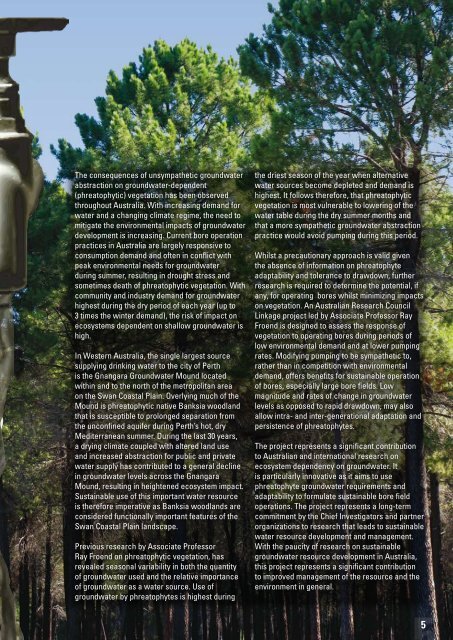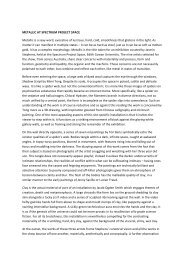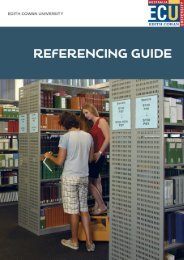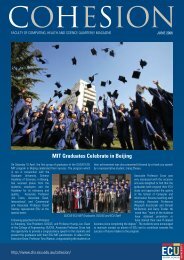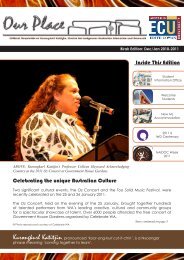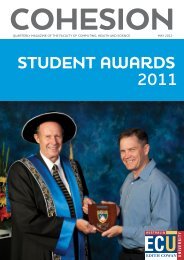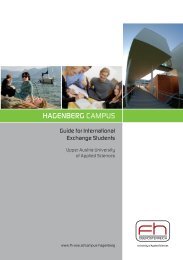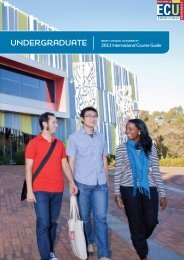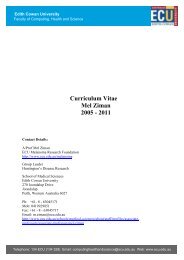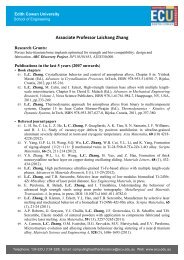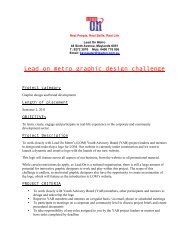CoHeSion - Edith Cowan University
CoHeSion - Edith Cowan University
CoHeSion - Edith Cowan University
You also want an ePaper? Increase the reach of your titles
YUMPU automatically turns print PDFs into web optimized ePapers that Google loves.
The consequences of unsympathetic groundwater<br />
abstraction on groundwater-dependent<br />
(phreatophytic) vegetation has been observed<br />
throughout Australia. With increasing demand for<br />
water and a changing climate regime, the need to<br />
mitigate the environmental impacts of groundwater<br />
development is increasing. Current bore operation<br />
practices in Australia are largely responsive to<br />
consumption demand and often in conflict with<br />
peak environmental needs for groundwater<br />
during summer, resulting in drought stress and<br />
sometimes death of phreatophytic vegetation. With<br />
community and industry demand for groundwater<br />
highest during the dry period of each year (up to<br />
3 times the winter demand), the risk of impact on<br />
ecosystems dependent on shallow groundwater is<br />
high.<br />
In Western Australia, the single largest source<br />
supplying drinking water to the city of Perth<br />
is the Gnangara Groundwater Mound located<br />
within and to the north of the metropolitan area<br />
on the Swan Coastal Plain. Overlying much of the<br />
Mound is phreatophytic native Banksia woodland<br />
that is susceptible to prolonged separation from<br />
the unconfined aquifer during Perth’s hot, dry<br />
Mediterranean summer. During the last 30 years,<br />
a drying climate coupled with altered land use<br />
and increased abstraction for public and private<br />
water supply has contributed to a general decline<br />
in groundwater levels across the Gnangara<br />
Mound, resulting in heightened ecosystem impact.<br />
Sustainable use of this important water resource<br />
is therefore imperative as Banksia woodlands are<br />
considered functionally important features of the<br />
Swan Coastal Plain landscape.<br />
Previous research by Associate Professor<br />
Ray Froend on phreatophytic vegetation, has<br />
revealed seasonal variability in both the quantity<br />
of groundwater used and the relative importance<br />
of groundwater as a water source. Use of<br />
groundwater by phreatophytes is highest during<br />
the driest season of the year when alternative<br />
water sources become depleted and demand is<br />
highest. It follows therefore, that phreatophytic<br />
vegetation is most vulnerable to lowering of the<br />
water table during the dry summer months and<br />
that a more sympathetic groundwater abstraction<br />
practice would avoid pumping during this period.<br />
Whilst a precautionary approach is valid given<br />
the absence of information on phreatophyte<br />
adaptability and tolerance to drawdown, further<br />
research is required to determine the potential, if<br />
any, for operating bores whilst minimizing impacts<br />
on vegetation. An Australian Research Council<br />
Linkage project led by Associate Professor Ray<br />
Froend is designed to assess the response of<br />
vegetation to operating bores during periods of<br />
low environmental demand and at lower pumping<br />
rates. Modifying pumping to be sympathetic to,<br />
rather than in competition with environmental<br />
demand, offers benefits for sustainable operation<br />
of bores, especially large bore fields. Low<br />
magnitude and rates of change in groundwater<br />
levels as opposed to rapid drawdown, may also<br />
allow intra- and inter-generational adaptation and<br />
persistence of phreatophytes.<br />
The project represents a significant contribution<br />
to Australian and international research on<br />
ecosystem dependency on groundwater. It<br />
is particularly innovative as it aims to use<br />
phreatophyte groundwater requirements and<br />
adaptability to formulate sustainable bore field<br />
operations. The project represents a long-term<br />
commitment by the Chief Investigators and partner<br />
organizations to research that leads to sustainable<br />
water resource development and management.<br />
With the paucity of research on sustainable<br />
groundwater resource development in Australia,<br />
this project represents a significant contribution<br />
to improved management of the resource and the<br />
environment in general.<br />
5


